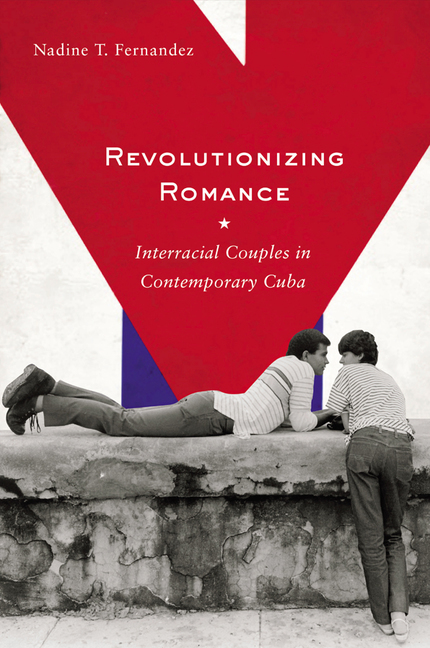Revolutionizing Romance: Interracial Couples in Contemporary Cuba [Williams Review]Posted in Anthropology, Articles, Book/Video Reviews, Caribbean/Latin America, Media Archive, Social Science on 2013-11-27 17:34Z by Steven |
Revolutionizing Romance: Interracial Couples in Contemporary Cuba [Williams Review]
Association for Feminist Anthropology
Book Reviews
2012-12-21
Erica Lorraine Williams, Assistant Professor of Anthropology
Spelman College, Atlanta, Georgia
Nadine T. Fernandez, Revolutionizing Romance: Interracial Couples in Contemporary Cuba (New Brunswick: Rutgers University Press, 2010)
In this insightful and well-written ethnography, Nadine Fernandez explores a central paradox: if mestizaje (racial mixing) is the “essence” of the Cuban nation, then why are interracial couples, the purported “engines of mestizaje” (184), still perceived with disdain? Why are interracial couplings – particularly those between black and white Cubans – so infrequent and often met with resistance? A deeply historical and ethnographic account, Revolutionizing Romance advances the compelling argument that “nowhere is race more salient than in romance” (50). Moreover, Fernandez argues that the conflicts surrounding interracial relationships actually highlight “the ideological aspects of racism at work” (53).
This important and timely book documents the shifting meanings of interracial relationships over time in Cuba. The first half of the ethnography provides the historical and conceptual background that sets the stage for the rest of the book by unpacking the history of whitening ideologies and the ideological construction of Cuba as a mestizo nation. Fernandez analyzes how the “revolution’s ideological insistence on ‘racelessness’…provided a sociocultural and ideological space for interracial couples” (68). For instance, Sofia, a mulata engineer and Fernando, a white art historian, are an interracial couple who were both born in the early 1950s and who met while studying in the former Soviet Union. Their families supported their relationship in part because of the color-blind ideology that the revolution had fostered. Interestingly, while race scholars are often dismissive of the concept of color-blindness (rightly so, I might add), Fernandez points out that in the context of Cuba, this concept has some redeeming qualities…
Read the entire review here.
